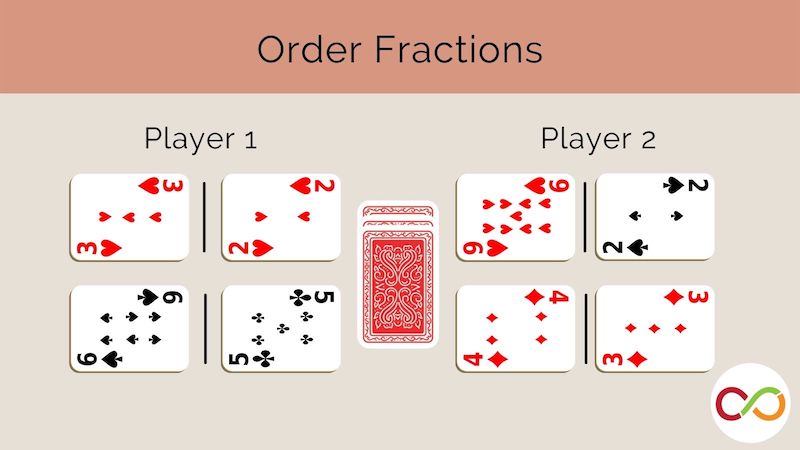Fractions and Decimals on a Number Line
Junior (Age 9 – 12)
Curriculum Goal
Junior: Number Sense
- Compare and order fractions from halves to twelfths, including improper fractions and mixed numbers, in various contexts.
- Read, represent, compare, and order decimal numbers up to hundredths, in various contexts
Context
- Carpet area, floor, or a long desk for the activity.
- Students should have previous experience with simple fractions (1/2, 1/3, 1/4, 1/5) and their equivalent decimals and percentages.
Materials
- One set of fraction and decimal cards per pair (Appendix A)
- One set of challenge cards per pair (Appendix B)
- Paper and pencils
Lesson
- Write some simple fractions on the board, one at a time (e.g., 1/2, 3/4, 1/3).
- Have students state the name of the fraction (one half, three fourths, one third).
- Ask students what these are in decimals or percentages (50% or 0.5, 75% or 0.75, 33.3% or 0.33). Ensure students understand that decimals and percentages are directly related to each other.
- Provide examples of fractions that are more difficult (e.g., 5/10, 1/25, 3/5). Ask students if they have strategies to determine the equivalent decimal or percentage (e.g., reducing the fraction into its simplest form, changing the denominator to 100 and then changing the numerator accordingly).
- Have students form pairs. Explain they will be given sets of cards to order on an imaginary number line.
- Review that a number line goes from left to right: smallest to largest.
- Provide an example to get students started: place 1/2 in the middle of their work area and then place 1/8 on the far left.
- Allow students to arrange the rest of the cards. Begin with simple fractions (15 cards in Appendix A), then the equivalent decimals (15 cards in Appendix A), and finally the mixed number/improper fraction/more difficult fractions (Appendix B).
- Encourage students to use a paper and pencil to manipulate the fractions if necessary.
- Review finished number lines, starting from zero. Encourage students to explain their reasoning and prompt discussion with the following questions:
- What were some of the strategies you used to match the decimal to the fraction? What about when ordering the more difficult fraction cards?
- How do you know that 1/25 is the same as 4/100?
- What was your strategy for working with improper and mixed fractions?
Look Fors
- Are students able to use strategies discussed earlier in the year to accurately determine the order of the numbers?
- Do students recognize related fractions and decimals? (Ex. 6/10 = 0.6?)
- What might be contributing to any confusion for students when attempting to create the number line?
Share this lesson
Share on facebook
Share on twitter
Share on email

